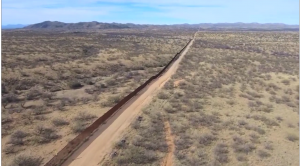LatinaLista — Back in the days when construction of the U.S.-Mexico border wall was at its height (pun intended) — seizing private and ancestral property, bulldozing its way through some selected neighborhoods and enraging locals on both sides of the border, a group of environmentalists, academicians, professionals and concerned citizens made it their mission to inform the general public about the impact of the border wall.
At first, this group created a listserve where members shared news, research, photographs and even documentaries about the border wall. Now, they’re bringing all their expertise to a new web site titled No Border Wall.
The site provides background information on the congressional legislation that authorized construction of the fence, the environmental impact of the wall on local nature preserves, a review of the private property seized for the construction and the human toll the wall has created among immigrants illegally crossing into the United States.
In addition, the site has a special section addressing the local impact of the wall in all the southwestern states that border Mexico.
There is even a section that looks at the different wall designs used across the U.S. – Mexico border.
Though the message is political, the site itself serves as a good resource for updated, accurate information about the wall’s impact and its effectiveness in achieving the goal of keeping migrants from entering the country illegally.
…the Border Patrol’s own statistics show that the border walls have not brought about a decrease in illegal entries…the greatest reductions in apprehensions, which according to the Border Patrol would indicate a successful strategy for stopping undocumented immigration, were seen in sectors that did not have walls.
Texas’ Rio Grande Valley sector saw a 45.3% decrease in apprehensions, bringing them to a 15 year low. The Del Rio, Texas, sector saw a 66.5% decrease. Neither sector had an inch of border wall before 2008. In sectors such as Tucson, which saw walls built shortly after passage of the Secure Fence Act, the reduction in apprehensions began before any wall posts were erected.
The areas that saw an increase in crossings were California’s San Diego and El Centro sectors, both of which have had border walls for over a decade. At the same time that the unwalled border witnessed dramatic decreases in crossings, heavily fortified San Diego saw a 20.1% increase.





